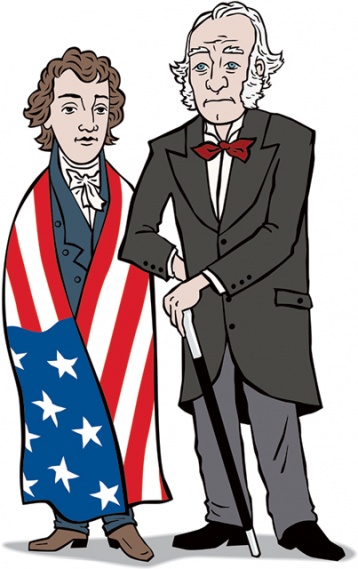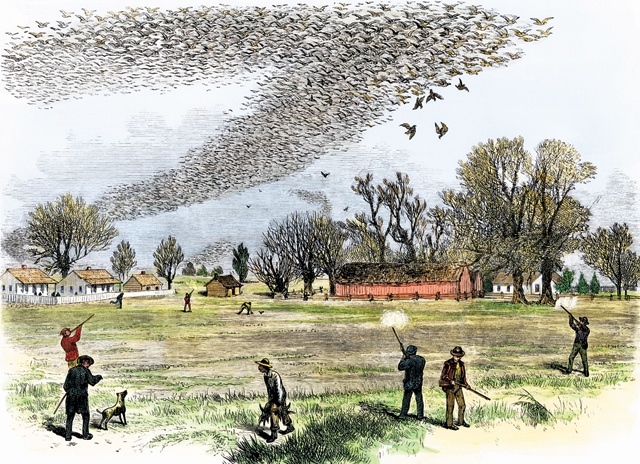Newspapers are key to keeping communities informed and connected. After Sam Houston connected with a fellow statesman with his cane in Washington, he turned to the author of our national anthem for legal assistance. We observe Child Passenger Safety Week and mark the demise of the passenger pigeon.
Read All About It
Newspapers first appeared in Texas about 200 years ago, but until the end of the Civil War, more than 100 publications were founded and folded, according to the Texas State Historical Association.
The earliest newspaper was a two-sided sheet of paper called Gaceta de Texas, printed in Spanish and published just once or twice in 1813. The Galveston News, founded in 1842, is among a handful of papers that started before the end of the Civil War and is still functioning.
Recent newspaper news seems bleak. Hundreds of Texas journalists have lost their jobs as newspapers struggle with declines in circulation and even greater declines in advertising revenue. Each of the three largest cities has seen a major newspaper go under in the last quarter-century: The Dallas Times Herald (1991), The San Antonio Light (1993) and the Houston Post (1995).
Still, community newspapers are thriving across the state—and doing their newsrooms proud. Texas has 463 paid-circulation newspapers, according to the Texas Press Association, including one that started up just last year—The Northshore Star in Lago Vista. Read “Success Stories,” one of our main features in September, to learn more about why it’s unthinkable to stop the presses.
The Star-Spangled Lawyer
Francis Scott Key holds a prominent place in American history for penning the song we call “The Star-Spangled Banner” on September 13, 1814. He was aboard a small American vessel and watched as the British tried and failed to destroy Fort McHenry in Chesapeake Bay.
Key, a poet and lawyer, holds a less prominent place in Texas history. In 1832, Sam Houston, a former congressman and governor of Tennessee, soundly clobbered U.S. Rep. William Stanberry of Ohio with a wooden cane on Pennsylvania Avenue in Washington. Houston had taken exception to statements made by Stanberry. Congress ordered Houston arrested. Despite the best efforts of his lawyer, Key, Houston was found guilty of contempt of Congress and reprimanded. Later that year, Houston headed for Texas, where he became the first president of Texas, a senator and governor.
Keep Kids Buckled
The National Highway Traffic Safety Administration has designated September 14–20 as Child Passenger Safety Week. Whenever you’re on the road, make sure your child passengers are buckled into age- and size-appropriate car seats, booster seats or seat belts. All children 12 and younger should ride in the back seat. Only 46 percent of children ages 4–7 were properly restrained in booster seats in 2013, according to the agency. The Centers for Disease Control and Prevention urges caregivers to follow these child passenger guidelines:
• Birth to age 2: Rear-facing car seat.
• Age 2 to at least age 5: Forward-facing car seat.
• Age 5 until seat belts fit properly: Booster seat.
• Seat belts: Seat belts fit properly when the lap belt lays across the upper thighs (not the stomach) and the shoulder belt lays across the chest (not the neck). For proper seatbelt fit, a person should be 57 inches tall.
Find the nearest child car seat inspection station at safercar.gov.
By the Numbers: 5,000,000,000
That was the estimated population of passenger pigeons, the most abundant land bird in North America in the 19th century. Elongated nesting colonies several miles wide could reach a length of 40 miles and turn day into night as they flew overhead. People on the ground reportedly would feel drafts as the birds beat their wings above. In most years, some of these birds wintered here, inhabiting much of northeastern Texas from September through March. One hundred years ago, on September 1, 1914, the last passenger pigeon died in the Cincinnati Zoo.






